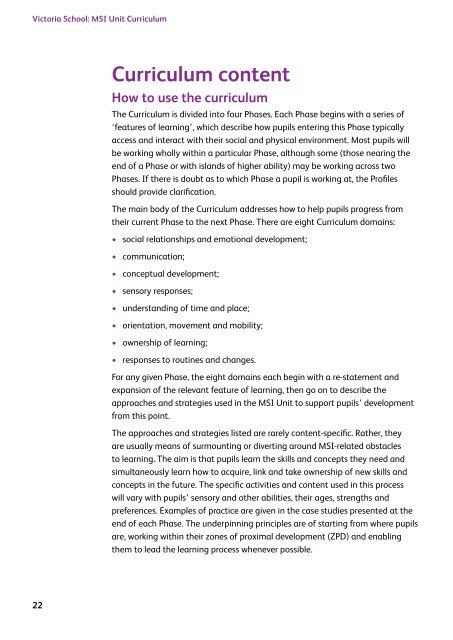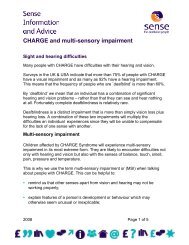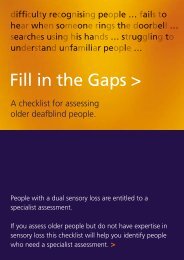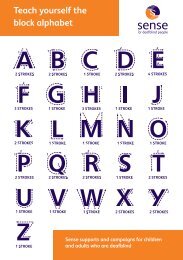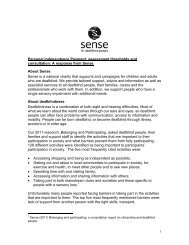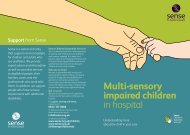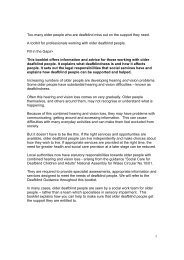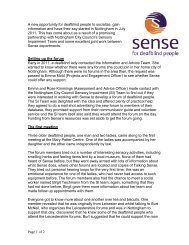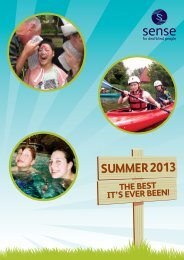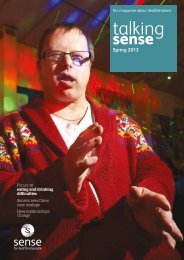MSI Unit Curriculum - Sense
MSI Unit Curriculum - Sense
MSI Unit Curriculum - Sense
Create successful ePaper yourself
Turn your PDF publications into a flip-book with our unique Google optimized e-Paper software.
Victoria School: <strong>MSI</strong> <strong>Unit</strong> <strong>Curriculum</strong><strong>Curriculum</strong> contentHow to use the curriculumThe <strong>Curriculum</strong> is divided into four Phases. Each Phase begins with a series of‘features of learning’, which describe how pupils entering this Phase typicallyaccess and interact with their social and physical environment. Most pupils willbe working wholly within a particular Phase, although some (those nearing theend of a Phase or with islands of higher ability) may be working across twoPhases. If there is doubt as to which Phase a pupil is working at, the Profilesshould provide clarification.The main body of the <strong>Curriculum</strong> addresses how to help pupils progress fromtheir current Phase to the next Phase. There are eight <strong>Curriculum</strong> domains:• social relationships and emotional development;• communication;• conceptual development;• sensory responses;• understanding of time and place;• orientation, movement and mobility;• ownership of learning;• responses to routines and changes.For any given Phase, the eight domains each begin with a re-statement andexpansion of the relevant feature of learning, then go on to describe theapproaches and strategies used in the <strong>MSI</strong> <strong>Unit</strong> to support pupils’ developmentfrom this point.The approaches and strategies listed are rarely content-specific. Rather, theyare usually means of surmounting or diverting around <strong>MSI</strong>-related obstaclesto learning. The aim is that pupils learn the skills and concepts they need andsimultaneously learn how to acquire, link and take ownership of new skills andconcepts in the future. The specific activities and content used in this processwill vary with pupils’ sensory and other abilities, their ages, strengths andpreferences. Examples of practice are given in the case studies presented at theend of each Phase. The underpinning principles are of starting from where pupilsare, working within their zones of proximal development (ZPD) and enablingthem to lead the learning process whenever possible.22


